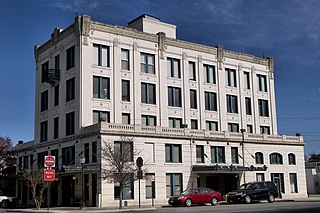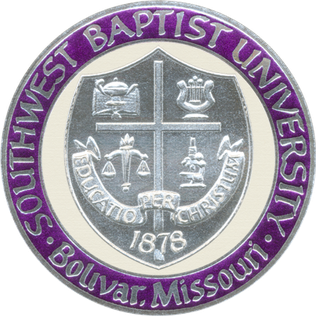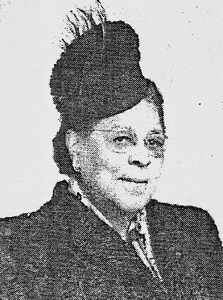
Guadalupe County is a county located in the U.S. state of Texas. As of the 2020 census, its population was 172,706. The county seat is Seguin. The county was founded in 1846 and is named after Guadalupe River.

Seguin is a city in and the county seat of Guadalupe County, Texas, United States; as of the 2020 census, its population was 29,433. Its economy is primarily supported by a regional hospital, as well as the Schertz-Seguin Local Government Corporation water-utility, that supplies the surrounding Greater San Antonio areas from nearby aquifers as far as Gonzales County. Several dams in the surrounding area are governed by the main offices of the Guadalupe-Blanco River Authority, headquartered in downtown Seguin.

East Texas Baptist University (ETBU) is a private Baptist university in Marshall, Texas. It is affiliated with the Baptist General Convention of Texas.
Bishop College was a historically black college, founded in Marshall, Texas, United States, in 1881 by the Baptist Home Mission Society. It was intended to serve students in east Texas, where the majority of the black population lived at the time. In 1961 the administration moved the college into Dallas, Texas. It closed in 1988.

Southwest Baptist University (SBU) is a private Baptist university in Bolivar, Missouri. It is affiliated with the Missouri Baptist Convention, which is part of the Southern Baptist Convention. In 2019, it had a total enrollment of 3,280 students attending at one of SBU's four Missouri campuses in Bolivar, Mountain View, Salem, or Springfield.

Texas Lutheran University (TLU) is a private Evangelical Lutheran university in Seguin, Texas.

Storer College was a historically black college in Harpers Ferry, West Virginia, that operated from 1867 to 1955. A national icon for black Americans, in the town where the 'end of American slavery began', as Frederick Douglass famously put it, it was a unique institution whose focus changed several times. There is no one category of college into which it fits neatly. Sometimes white students studied alongside black students, which at the time was prohibited by law at state-supported schools in West Virginia and the other Southern states, and sometimes in the North.

Texas A&M University–Commerce is a public university in Commerce, Texas. With an enrollment of over 12,000 students as of fall 2017, the university is the third-largest institution in the Texas A&M University System. Founded in 1889, the institution is also the fifth-oldest state university or college in the State of Texas.

Hardin–Simmons University (HSU) is a private Baptist university in Abilene, Texas, United States. It is affiliated with the Baptist General Convention of Texas.

KWED is a radio station in Seguin, Texas broadcasting a full service country music format. It is currently owned by Guadalupe Media, Ltd. Programming is sourced from Premiere Networks and Westwood One, along with news and weather updates every hour from CBS News Radio and an in-house news staff. KWED also operates an online newspaper, Seguin Daily News, produced by the news staff every business day and available for free on the station's website.

Staples is a city in northeastern Guadalupe County, Texas, United States. In an election held on May 10, 2008, its residents voted to incorporate the community as a city. A total of 125 votes were cast, with 87 (69.6%) in favor of incorporation and 38 (30.4%) against. The population is approximately 220 and it is part of the San Antonio Metropolitan Statistical Area.

Doak Sheridan Campbell was from 1941 to 1957 president of Florida State College for Women and its successor coeducational school, Florida State University. He oversaw the creation of this new university. His opposition to the admission of African-American students has caused controversy about the naming of Doak S. Campbell Stadium in his honor.

The Seguin Gazette is a newspaper based in Seguin, Texas, covering the Guadalupe County area of Central Texas. It publishes twice a week — Wednesdays and Sundays. It is owned by Southern Newspapers Inc.

David Abner Jr. was an American educator. He was the first president of Guadalupe College and then of Conroe College.

Maud Anna Berry Fuller, also known as M. A. B. Smith and M. A. B. Fuller, was an American educator and a leader in the Baptist church. She was the founder and the editor of the Woman's Helper, a national newspaper. Fuller served for 41 years as the president of the National Baptist Convention's Women's Auxiliary.

The history of the University of Texas at Arlington began with the foundation of Arlington College in 1895, which was the first of a series of private schools to exist on the site of the present university. Created largely due to the underfunded and generally inadequate public schools in the city, it closed in July 1902 after Arlington voters passed a proposition to create an independent school district. Carlisle Military Academy was established on the same site by Colonel James M. Carlisle in 1902. It was molded by Carlisle's educational philosophy, which balanced intellectualism with military training. Carlisle's financial problems resulted in the school entering receivership in 1911, and in 1913 the school closed. In September 1913, Arlington Training School was founded by H. K. Taylor. The school was beset by financial troubles and lawsuits, ultimately closing after the 1915–16 academic year. In 1916, Arlington Military Academy was founded by John B. Dodson, and it lasted for only one academic year.

From 1917 to 1965, what is now the University of Texas at Arlington was a member of the Texas A&M University System. In March 1917, it was organized as Grubbs Vocational College (GVC), a junior college that was a branch campus of the Agricultural and Mechanical College of Texas (AMC), which later became Texas A&M University. Open only to white students, the curriculum at GVC centered around the agricultural, industrial, and mechanical trades.

In April 1965, the Texas Legislature transferred Arlington State College (ASC) from the Texas A&M University System to the University of Texas System. The following year, Maxwell Scarlett was the first African-American graduate in ASC history. In March 1967, ASC was renamed the University of Texas at Arlington (UTA). Jack Woolf, president of ASC and UTA since 1959, resigned in 1968 and was succeeded by Frank Harrison; Harrison was president until 1972. UTA awarded its first master's degrees in 1968, all in engineering. Reby Cary, the university's first African-American administrator, was hired the following year.
Conroe Normal and Industrial College (1903–1981) was a private co-educational vocational school and normal school for African American students, founded in 1903 in Conroe, Texas, United States. The school also went by the names Conroe Baptist Theological Institute, and Conroe College.
Juno Common School District No. 4 was a school district formerly based in Juno, Texas.


















